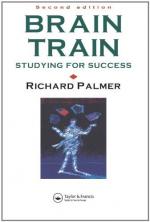|
This section contains 1,042 words (approx. 4 pages at 300 words per page) |

|
With its hundreds of billions of interconnectednerve cells, or neurons, continuously transmitting electrochemical signals to each other, the human brain is the most complex object yet discovered. Fortunately, our understanding of the brain has been greatly aided in recent years by various technologies that allow scientists to "see" the brain, or "map" its electrochemical activity, without the surgery or autopsy required in the past.
In higher animals, the brain and spinal cord constitute the central nervous system. Not all animals have brains, though all vertebrates do. The brain of the adult human being weighs between three and four pounds (1.35-1.8 kg). The human brain is protected by he cranium and three membranes, called meninges; the space between the two inner meninges is filled with cerebrospinal fluid. The fundamental building block of the brain in all animals is the nerve cell. This cell conducts electrical and chemical signals through...
|
This section contains 1,042 words (approx. 4 pages at 300 words per page) |

|


